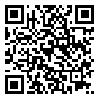Volume 13, Issue 6 (9-2014)
ijdld 2014, 13(6): 447-454 |
Back to browse issues page
Download citation:
BibTeX | RIS | EndNote | Medlars | ProCite | Reference Manager | RefWorks
Send citation to:



BibTeX | RIS | EndNote | Medlars | ProCite | Reference Manager | RefWorks
Send citation to:
Ghassemi S, Najafi B, Memari A, Nazari N, Bakhtiari F, Alizadeh Khoei M, et al . ELDERLY FALLS RISK FACTORS: A PROSPECTIVE LONGITUDINAL STUDY IN KAHRIZAK CHARITY FOUNDATION. ijdld 2014; 13 (6) :447-454
URL: http://ijdld.tums.ac.ir/article-1-5262-en.html
URL: http://ijdld.tums.ac.ir/article-1-5262-en.html
Sima Ghassemi1 
 , Baharak Najafi2
, Baharak Najafi2 
 , Alireza Memari3
, Alireza Memari3 
 , Neda Nazari2
, Neda Nazari2 
 , Fariborz Bakhtiari3
, Fariborz Bakhtiari3 
 , Mahtab Alizadeh Khoei2
, Mahtab Alizadeh Khoei2 
 , Masood Arzaghi2
, Masood Arzaghi2 
 , Shervan Shoaee2
, Shervan Shoaee2 
 , Neda Mehrdad2
, Neda Mehrdad2 
 , Farshad Sharifi *
, Farshad Sharifi * 
 4
4

 , Baharak Najafi2
, Baharak Najafi2 
 , Alireza Memari3
, Alireza Memari3 
 , Neda Nazari2
, Neda Nazari2 
 , Fariborz Bakhtiari3
, Fariborz Bakhtiari3 
 , Mahtab Alizadeh Khoei2
, Mahtab Alizadeh Khoei2 
 , Masood Arzaghi2
, Masood Arzaghi2 
 , Shervan Shoaee2
, Shervan Shoaee2 
 , Neda Mehrdad2
, Neda Mehrdad2 
 , Farshad Sharifi *
, Farshad Sharifi * 
 4
4
1- 1. School of Public Health, Shahid Beheshti University of Medical Sciences, Tehran, Iran
2- 2. Elderly Health Research Center, Endocrinology and Metabolism Population Sciences Institute, Tehran University of Medical Sciences, Tehran, Iran
3- 3. Kahrizak Charity Foundation, Tehran, Iran
4- 2. Elderly Health Research Center, Endocrinology and Metabolism Population Sciences Institute, Tehran University of Medical Sciences, Tehran, Iran ,farshad.sharifi@gmail.com
2- 2. Elderly Health Research Center, Endocrinology and Metabolism Population Sciences Institute, Tehran University of Medical Sciences, Tehran, Iran
3- 3. Kahrizak Charity Foundation, Tehran, Iran
4- 2. Elderly Health Research Center, Endocrinology and Metabolism Population Sciences Institute, Tehran University of Medical Sciences, Tehran, Iran ,
Abstract: (8814 Views)
Background: Falling is one of the health problems among aged population. Elderly living in institutions are at greater risk of falling than those dwellings in the community, due to their health status and environmental conditions. This study was designed and conducted aimed to address the factors affecting falls in Kahrizak Charity Foundation (KCF).
Methods: This is a prospective longitudinal study, which 194 of residents of KCF were participating in it with inclusion criteria were selected by Random Cluster sampling. They were enrolled after signing an informed consent. At baseline the data of demographic, lifestyle, past medical history and visual ability were collected by interviewing. The anthropometric measurements were performed as well. Cognitive status data were collected using abbreviated mental test (AMT) questionnaire and mini mental state examination (MMSE), balance status was assessed using the Tinetti mobility test (TMT) and its balance and gait sub- scores, depression was detected using the geriatric depression scale-15 (GDS-15). The participants were monitored for the falls occurrence its complications by daily call with caregivers and filling out the special forms for the recording of the falls occurrence by the head nurse. Data were analyzed using univariate and multivariable Cox-regression models.
Results: The mean age of the participants was76.02 (8.82) years and the mean follow-up days was 754.40±189.26 days. 44 cases of falls were recorded during follow-up (over two years). The fall rate was 22.7 subjects per 100 participants per year. History of stroke, Parkinson's disease, visual loss, taking antidepressants, TMT score and TMT balance sub-score after adjustment (for age, sex, body mass index and survival time) were associated with falls.
Conclusion: The falls among nursing home elderly residents were associated with a history of chronic diseases such as stroke and Parkinson's diseases, visual acuity, use of antidepressants and the TMT and its balance sub score.
Type of Study: Research |
Subject:
General
Received: 2014/11/15 | Accepted: 2014/11/15 | Published: 2014/11/15
Received: 2014/11/15 | Accepted: 2014/11/15 | Published: 2014/11/15
Send email to the article author
| Rights and permissions | |
 |
This work is licensed under a Creative Commons Attribution-NonCommercial 4.0 International License. |



